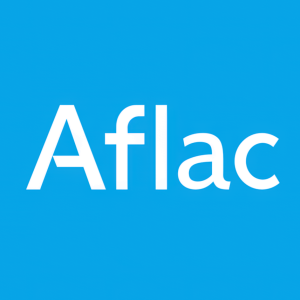Aflac Voices - Jeri Hawthorne: Cultivating Mental Wellness at Work
Aflac's Chief Human Resources Officer, Jeri Hawthorne, highlights the importance of mental wellness at work. Based on her personal experiences, she emphasizes the need for a balanced life, as confirmed by the recent Aflac WorkForces Report which shows 74% of American workers are stressed, and 57% face moderate levels of burnout. Hawthorne advises assessing one's work-life balance using a 'button' analogy and encourages employees to utilize available benefits, understand stress limits, take paid time off, and get regular health checkups. This approach aims to foster a healthier and more productive work environment.
- Aflac's focus on mental wellness aligns with the increasing awareness and importance of employee well-being.
- The Aflac WorkForces Report provides valuable data: 74% of American workers are stressed, and 57% face burnout, indicating a important area for corporate intervention.
- Encouraging employees to use PTO and benefits can lead to a more rested and productive workforce.
- Highlighting the analogy of the 'button' helps employees visually assess and balance their work and personal lives, potentially reducing burnout.
- No specific new financial or business developments were announced in the PR, which might be seen as a missed opportunity to provide market-moving news.
- The PR could be perceived as more of a motivational piece rather than a strategic business update, potentially lacking the concrete data that some investors seek.
By Jeri Hawthorne, Chief Human Resources Officer, Aflac Incorporated
Originally published on Aflac Newsroom
NORTHAMPTON, MA / ACCESSWIRE / May 30, 2024 / Early in my career, I was leading a global HR function and traveling all over the world to help open facilities in various countries. It was a very intense job - when I wasn't on a plane, I was commuting almost three hours a day - but it was work for which I felt proud and enjoyed.
The company presented an opportunity to participate in a leadership training program that emphasized the importance of work-life balance across professional life, family life, community involvement and self-care. Each of us drew a button with four holes, one for each of those four categories. The size of the hole was supposed to represent how much time and energy we were spending on that particular category.
My button had only three holes: an extra-large one for work; two very tiny ones that represented family life and self-care; and community was missing entirely. I loved my job at the time, but that one exercise made me realize that I was placing too much focus on just that one aspect of my life at the expense of quality time in other, more important areas.
I have carried this analogy with me throughout my career and use it regularly to help ensure I integrate each of these facets in a more deliberate way - especially now that the topic of burnout is more top of mind than ever before.
In fact, the recent Aflac WorkForces Report confirmed what I knew to be true from my own experience then and what many Americans are experiencing today - it showed that
Now that I'm in a position to influence change and help ensure the well-being of those at my workplace, I have some advice that helped me in my journey to build mental wellness at work:
- Draw your own button. The only way to know what you need to do is to assess where you are today. Draw a button with four holes representing your professional life, family life, community involvement and self-care, and make the size of each hole bigger or smaller based on how much of your time is spent in each category. Use that to find where you need to adjust how you spend your time and energy. Know that your priorities will likely change based on life circumstances. So, use this analogy over time as your think about priorities.
- Get to know your benefits. Trying to understand your benefits in a time of distress can create more stress. If you have access to benefits, take time to learn them so you can take advantage of available services, apps and classes dedicated to enhancing your mental health. Some employers even provide programs that address other aspects - such as financial, social and physical wellness - that can also play a role in mental health.
- Find the line. There is a fine line between beneficial stress that leads to growth and stress that leads to burnout. I've learned that mental wellness is like physical wellness in a lot of ways. Much like strength training helps build muscle, mentally challenging work can help build resilience. But in that same vein, working out too hard or too often can put you at risk for injury, just as being overwhelmed with daily responsibilities with no chance for rest can put you at risk for burnout. The line between the two is different for everyone, but it's important to find where it is for you.
- Use your PTO. If you're in the workforce, you may earn paid time off (PTO) - use it. Whether you take a big, weeklong trip or just a day to unplug at home, use that time to reset and recharge. (And if you manage employees, encourage them to use their PTO, especially if it's at risk of expiring. Having that level of support from leadership goes a long way in building trust.)
- Get your health checkups. Whether you feel fine or not, it's always important to get your regular checkups - they help ensure you're in good health, and they present opportunities to have open conversations with health care professionals about building mental wellness.
Work is a significant part of who we are - after all, we spend at least a third of our weekdays at work - but it's important to remember that it is just one component of who we are and just one component of what impacts our mental health. Set aside time regularly to take stock of where your time and energy are going, so that you can ensure you're bringing your best self across all areas of life.
Aflac includes American Family Life Assurance Company of Columbus and American Family Life Assurance Company of New York
Aflac WWHQ | 1932 Wynnton Road | Columbus, GA 31999
Z2400481

View additional multimedia and more ESG storytelling from Aflac Incorporated on 3blmedia.com.
Contact Info:
Spokesperson: Aflac Incorporated
Website: https://www.3blmedia.com/profiles/aflac-incorporated
Email: info@3blmedia.com
SOURCE: Aflac Incorporated
View the original press release on accesswire.com
FAQ
What does the Aflac WorkForces Report reveal about employee stress?
How does Aflac suggest employees manage work-life balance?
What is Jeri Hawthorne's role at Aflac?
What are some strategies Aflac recommends for mental wellness?







